TLDR & TLDL: The Government has released a ‘holding pattern’ three-year spending plan for transport that is yet to include potentially major changes to spending on public transport, cycling and walking to achieve carbon zero by 2050. The latest $24.3b plan is 44% bigger than the last one and includes a $2b top-up loan from the Government to Waka Kotahi-NZTA. However, only a quarter of the plan is for public transport and nearly two-thirds is for maintaining roads and building new ones.
The bigger news was the use of a Crown loan to NZTA for the first time and the start of a funding review for its National Land Transport Fund that could see the introduction of congestion charges and replacements for petrol levies and road user charges for diesel vehicles that are expected to go electric.
The podcast above includes my questions and the answers of Transport Minister Michael Wood and NZTA Chair Brian Roche on funding and spending, and in particular why road spending still dominates versus public transport, cycling and walking.
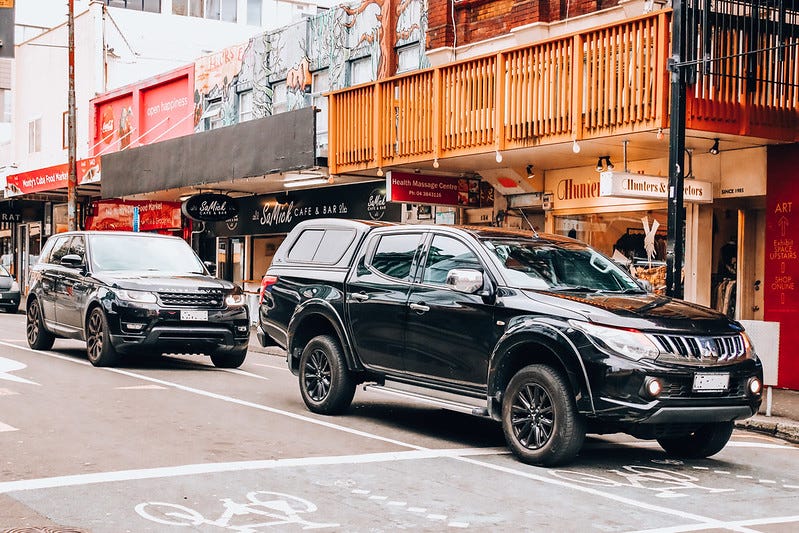
My view: This doesn’t even scratch the surface of the change needed to public funding of transport to get to carbon zero by 2050, or more importantly, quickly switch away from burning petrol and diesel commuting in our cities to using buses, trains, bikes and walking. That requires mass reconfiguration of roads into busways, cycleways and walkways, along with congestion charging that ensures a ‘just transition’ of subsidised public transport and walking and cycling infrastructure paid for by richer motorists.
The Government has yet to grasp those political hot potatoes in a culture-war-ish climate of cyclists vs motorists and opposition to using petrol levies and RUCs to pay for poorer ‘other’ people to use buses and ‘take our roads away’ for cycling and walking. The vitriolic reactions to trials such as the Arthur Grey Low Traffic Area pilot in Onehunga in May, the second harbour bridge for cyclists and walkers, and the ‘Groundswell opposition to the Clean Car Rebate ‘ute tax’ scheme show little political appetite across business and the centre-right for these changes. See and hear more on that in a podcast/column I did for the Spinoff last month.
Today’s announcements confirm the Government’s politically cautious approach and the continued dominance of the road-heavy culture at NZTA, although the jury remains out until the Government releases is Emissions Reductions Plan in coming weeks to take a bigger emissions reduction contribution to the big UN conference starting in Glasgow at the beginning of November, and to respond fully to the Climate Commission’s recommendations by the end of the year. So, in theory, the Government could announce a major pivot to carbon-light transport spending and funding before the end of the year, although I doubt we’ll see anything transformative.
My current assumption is the Government won’t want to push the politically sensitive buttons of swapping road spending for buses, walking and cycling, partly by imposing new congestion charges. But it will promote the ‘billions of extra spending’ on public transport planned in the years ahead, hopeful the big numbers will show the public (who mostly don’t want real change) that the Government is headed in the ‘right’ direction. But I like surprises.
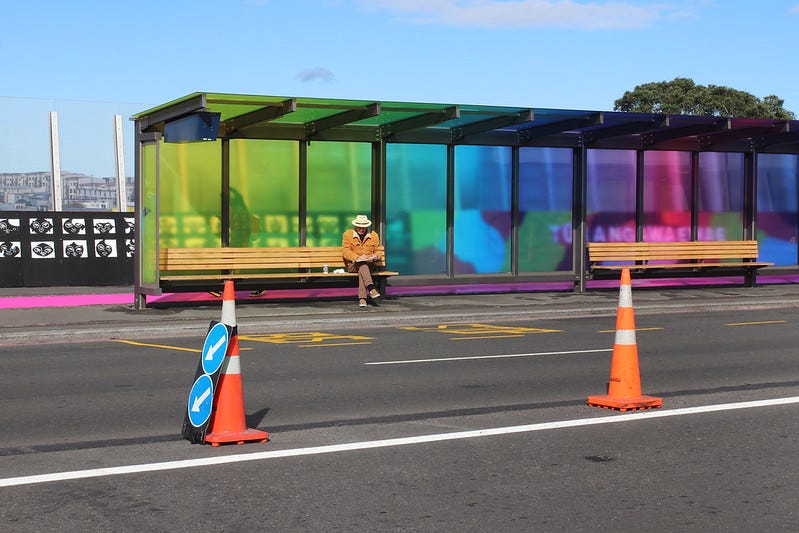
Today’s news: Govt to top up transport funding
Transport Minister Michael Wood announced the unveiling of the latest National Land Transport Plan (NLTP for 2021-24) this morning, which specifies how much money Waka Kotahi-NZTA will receive and spend over the next three years, including on public transport, walking and cycling, and roading.
The news today was the Government will loan an extra $2b to NZTA to top up funds from fuel levies and road user charges (RUCs), and funds from councils. Wood has also launched a formal review of the funding arrangements for transport. Currently there is a ‘hypothecated fund’ (the National Land Transport Fund (NLTF) that is built up with revenues from levies and RUCs and the money is dedicated or ‘hypothecated’ to building and maintaining roads, rail and public transport.
In theory, each three-year period’s revenues into the NLTF should be matched by spending on roading, buses, rail, cycling and walking. But increasing spending on public transport, cycling and walking, along with an expectation drivers will switch from petrol and diesel vehicles to electric, has put the fund under pressure.
Wood and Waka Kotahi Chair Brian Roche said the review would start next year with a public discussion paper. Wood said it would take years, rather than months, and the Government would look to continue to fill any gaps, possibly with extra loans, in the meantime. They agreed the review would look at the use of congestion charges and how to transition from levies paid per litre of petrol and the number of kms travelled on roads by diesel-powered vehicles.
This latest NTLP is up 44% from the last one, and 75% above the one before that, which was set under the previous National-led Government. However, it is likely to be changed again dramatically as the Government is in the final stages of preparing its Emissions Reduction Plan (ERP), which will form a major part of the response to the Climate Commission’s recommendations and to beef up Aotearoa-NZ’s emissions reduction commitments for the Glasgow conference at the beginning of November.
Most new spending on roads
Wood said this new NTLP did not include changes to be incorporated in the ERP. Currently, only $6b or 25% of the spending is on public transport, cycling and walking, albeit up 40% from the previous NLP.
This plan spends $3.9b on expanding highways and motorways, including the $661m Te Ahu a Turanga Manawatū Tararua Highway (Manawatu Gorge replacement) and $637m to complete the Waikato Expressway extension by filling in the ‘gap’ of 21.8km on a bypass east of Hamilton.
It also continues on with the Mt Messenger Bypass on the road between Te Kuiti and New Plymouth, a $280m project for 6km of new motorway, two new bridges and a 235m tunnel. Here’s a ‘flyover’ view of that project.
The new NTLP included $2.7b for Auckland, which was $300-$400m less than Auckland Council applied for.
The plan does include $30m over three years for “investments in infrastructure, research and programme business cases, and projects” to improve coastal shipping. There were no specifics on how that money would be spent.
Highway spending double that of emissions reducing infrastructure
The funds granted for public transport, cycling and walking were far less than that proposed by councils in their Regional Long Term Plans. Spending on state highway improvements is forecast to be almost double that on public transport, cycling and walking.
I welcome your thoughts and questions on the plan, in particular the mix of public transport, cycling and walking, vs roads, whether big new roads should still be planned or built.
For example, this plan includes $910m on new shared pathways, bike routes, walkways and pedestrian facilities, yet $6.6b is spent upgrading roads and motorways. The Government of Wales in Britain, for example, announced in June it would freeze all new road building projects to achieve its climate change aims.





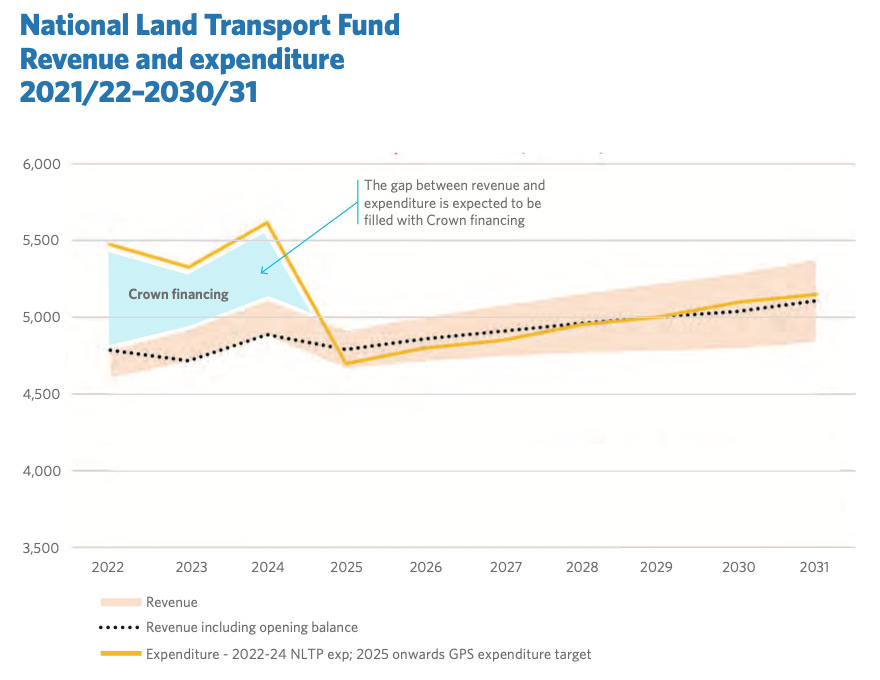
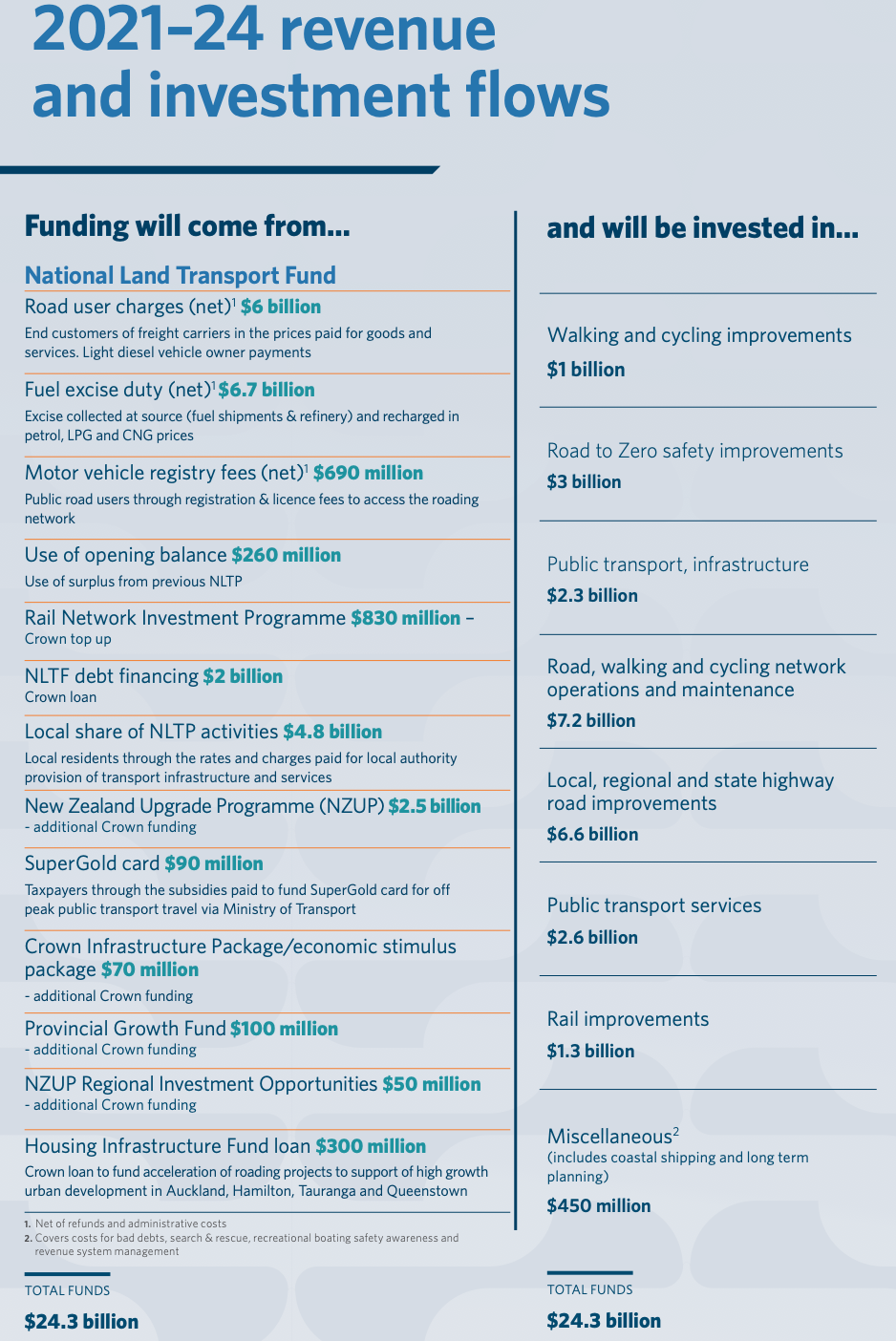
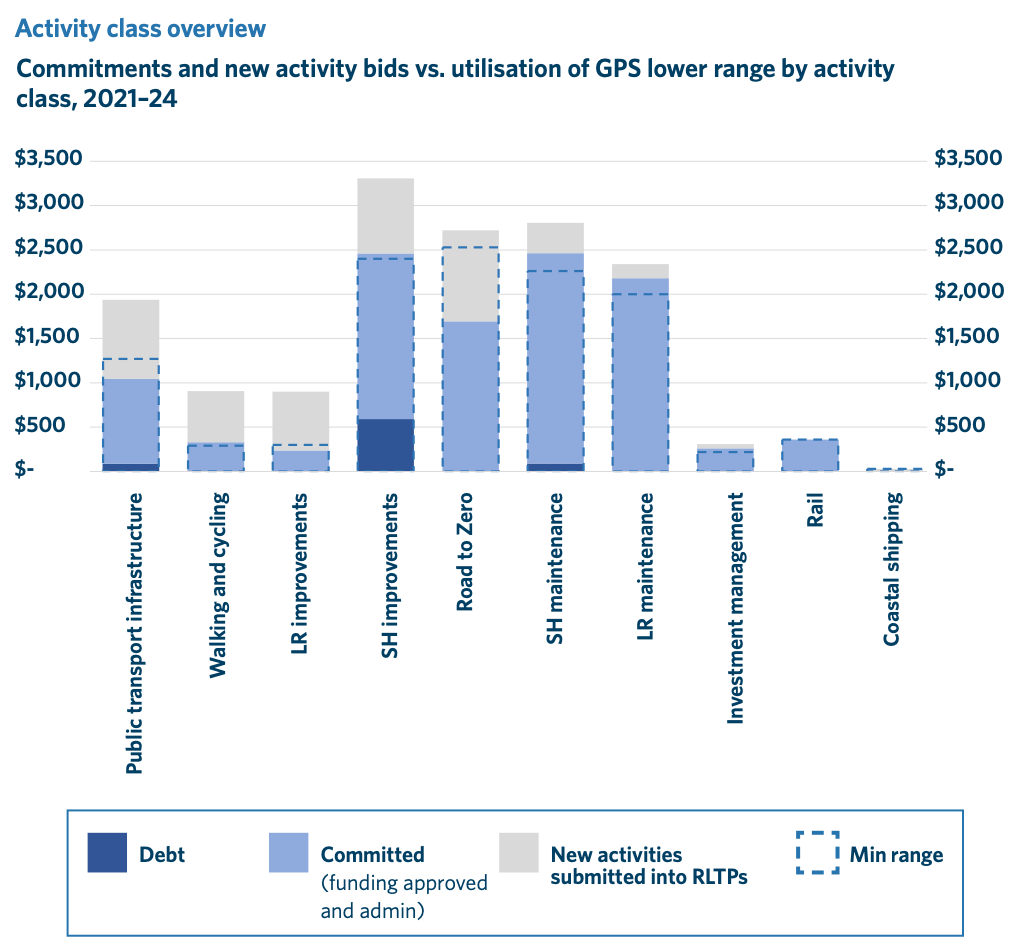









Share this post